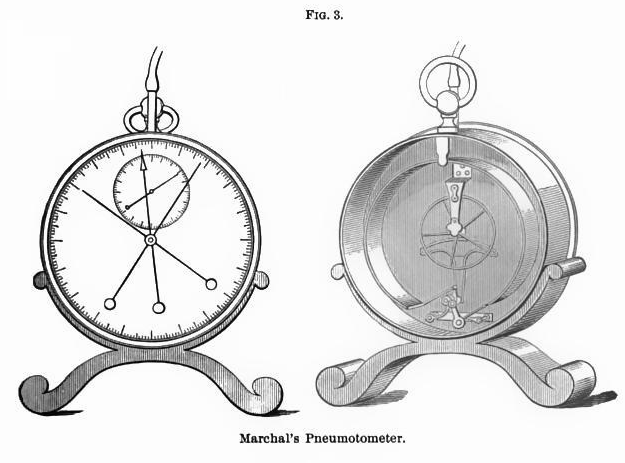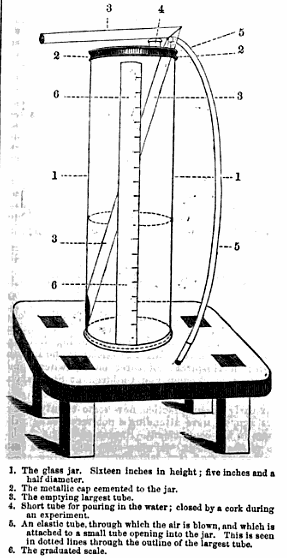From Physical and Natural Therapeutics by Georges Hayem, 1895, page 21.
“Marchal’s Pneumatometer consists essentially of a manometric tube, representing almost a complete circle, and communicating at its upper portion with a mouthpiece, from or into which inspiration or expiration is made according as the force of one or the other is to be measured. Index needles serve to mark the diminuation and the increase in pressure (fig 3.).
“If the inspiratory force is to be determined, the needle is placed on the side marked inspiration, and with it also one of the maximal needles. Then, having made a strong expiration, the person applies the lips hermetically against the mouthpiece and takes the deepest inspiration possible. The index needle is displaced, carrying the maximal needle with it; the latter remains at the extreme point, but the former quickly rebounds. The number of degrees indicated by the maximal needle corresponds to the pressure in centimeters of mercury.
“To measure expiration, the stopcocks are reversed, and the needle, carrying the maximal needle with it is placed on the corresponding side. The subject after taking the strongest possible inspiration expires forcibly, and the second maximal needle indicates the result of the effort.
“As a rule the inspiratory effort is less powerful and the expiratory; according to Marchal the ratio is 2 to 3.
“Moreover the result of the effort is not necessarily proportionate to the vital capacity, for the muscles of respiration vigorous in one possessing a relatively small vital capacity, and vice versa.”

